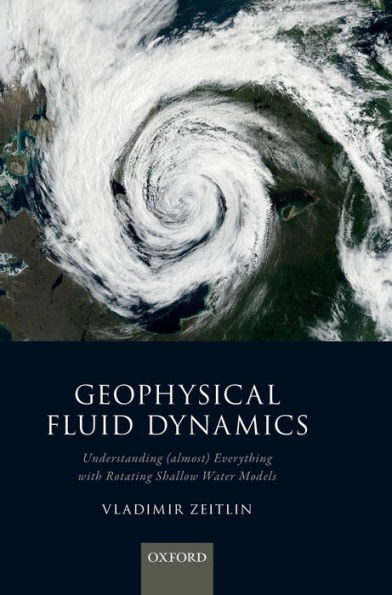Geophysical Fluid Dynamics: Understanding (almost) everything with rotating shallow water models
Geophysical fluid dynamics examines the dynamics of stratified and turbulent motion of fluids in the ocean and outer core, and of gases in the atmosphere. This book explains key notions and fundamental processes of the dynamics of large- and medium-scale atmospheric and oceanic motions from the unifying viewpoint of the rotating shallow water model. The model plays a distinguished role in geophysical fluid dynamics. It has been used for about a century for conceptual understanding of various phenomena, for elaboration of approaches and methods to be used later in more complete models, for development and testing of numerical codes, and for many other purposes. In spite of its simplicity, the model grasps essential features of the complete "primitive equations" models, being their vertically averaged version, and gives an intuitive representation and clear vision of principal dynamical processes.
This book is a combination of a course on geophysical fluid dynamics (Part 1), with explanations and illustrations of fundamentals, and problems, as well as a more advanced treatise of a range of principal dynamical phenomena (Part 2), including recently arisen approaches and applications (Part 3). Mathematics and physics underlying dynamical phenomena are explained, with necessary demonstrations. Yet, an important goal of the book is to develop the reader's physical intuition and qualitative insights.
1133680114
This book is a combination of a course on geophysical fluid dynamics (Part 1), with explanations and illustrations of fundamentals, and problems, as well as a more advanced treatise of a range of principal dynamical phenomena (Part 2), including recently arisen approaches and applications (Part 3). Mathematics and physics underlying dynamical phenomena are explained, with necessary demonstrations. Yet, an important goal of the book is to develop the reader's physical intuition and qualitative insights.
Geophysical Fluid Dynamics: Understanding (almost) everything with rotating shallow water models
Geophysical fluid dynamics examines the dynamics of stratified and turbulent motion of fluids in the ocean and outer core, and of gases in the atmosphere. This book explains key notions and fundamental processes of the dynamics of large- and medium-scale atmospheric and oceanic motions from the unifying viewpoint of the rotating shallow water model. The model plays a distinguished role in geophysical fluid dynamics. It has been used for about a century for conceptual understanding of various phenomena, for elaboration of approaches and methods to be used later in more complete models, for development and testing of numerical codes, and for many other purposes. In spite of its simplicity, the model grasps essential features of the complete "primitive equations" models, being their vertically averaged version, and gives an intuitive representation and clear vision of principal dynamical processes.
This book is a combination of a course on geophysical fluid dynamics (Part 1), with explanations and illustrations of fundamentals, and problems, as well as a more advanced treatise of a range of principal dynamical phenomena (Part 2), including recently arisen approaches and applications (Part 3). Mathematics and physics underlying dynamical phenomena are explained, with necessary demonstrations. Yet, an important goal of the book is to develop the reader's physical intuition and qualitative insights.
This book is a combination of a course on geophysical fluid dynamics (Part 1), with explanations and illustrations of fundamentals, and problems, as well as a more advanced treatise of a range of principal dynamical phenomena (Part 2), including recently arisen approaches and applications (Part 3). Mathematics and physics underlying dynamical phenomena are explained, with necessary demonstrations. Yet, an important goal of the book is to develop the reader's physical intuition and qualitative insights.
150.0
Out Of Stock
5
1

Geophysical Fluid Dynamics: Understanding (almost) everything with rotating shallow water models
512
Geophysical Fluid Dynamics: Understanding (almost) everything with rotating shallow water models
512
150.0
Out Of Stock

Product Details
| ISBN-13: | 9780198804338 |
|---|---|
| Publisher: | Oxford University Press |
| Publication date: | 04/15/2018 |
| Pages: | 512 |
| Product dimensions: | 9.70(w) x 6.70(h) x 1.10(d) |
About the Author
From the B&N Reads Blog
